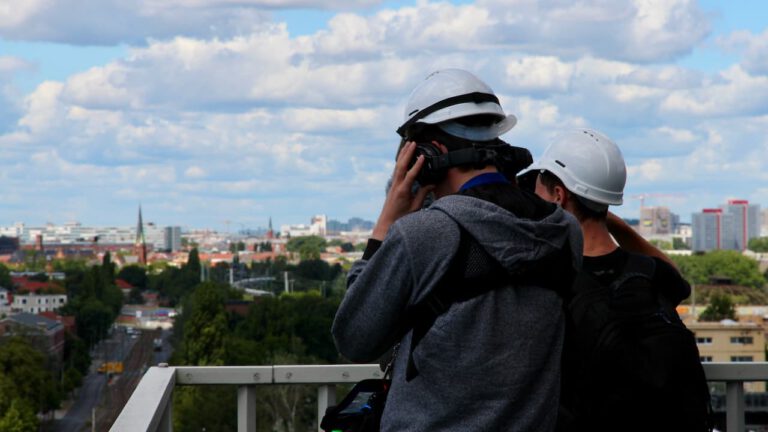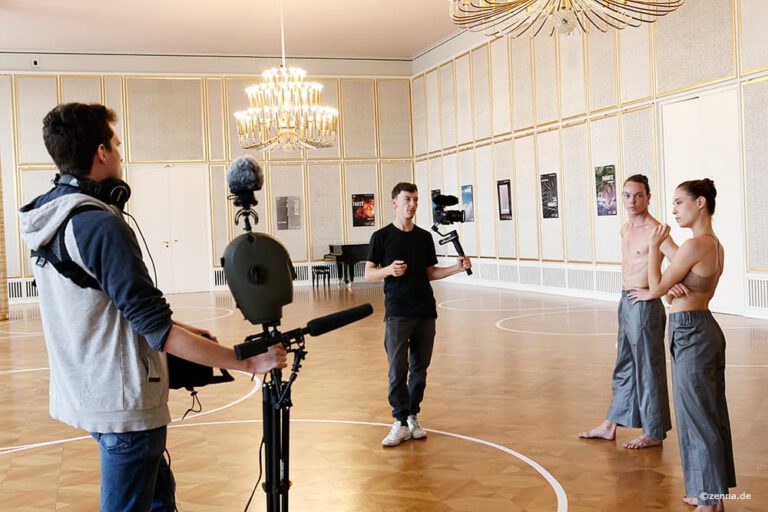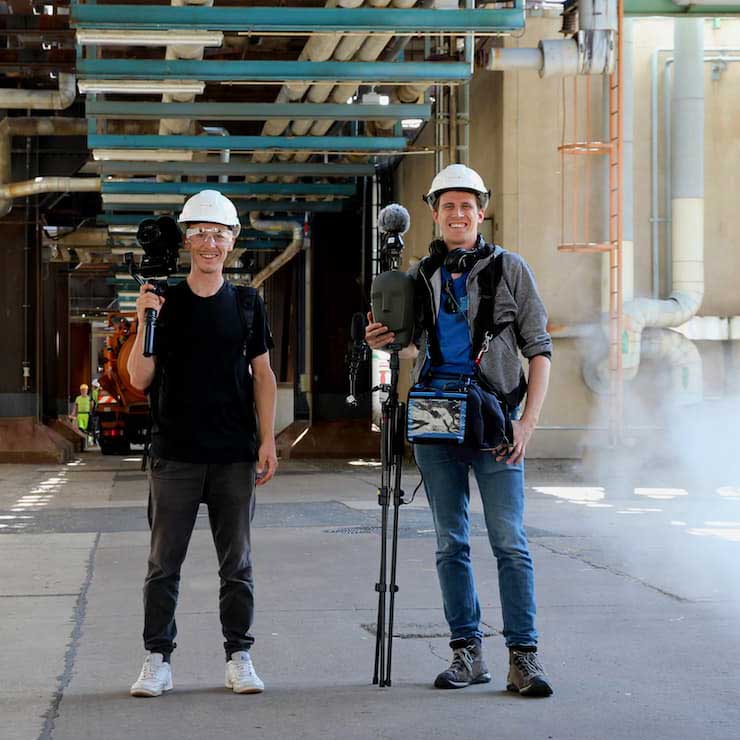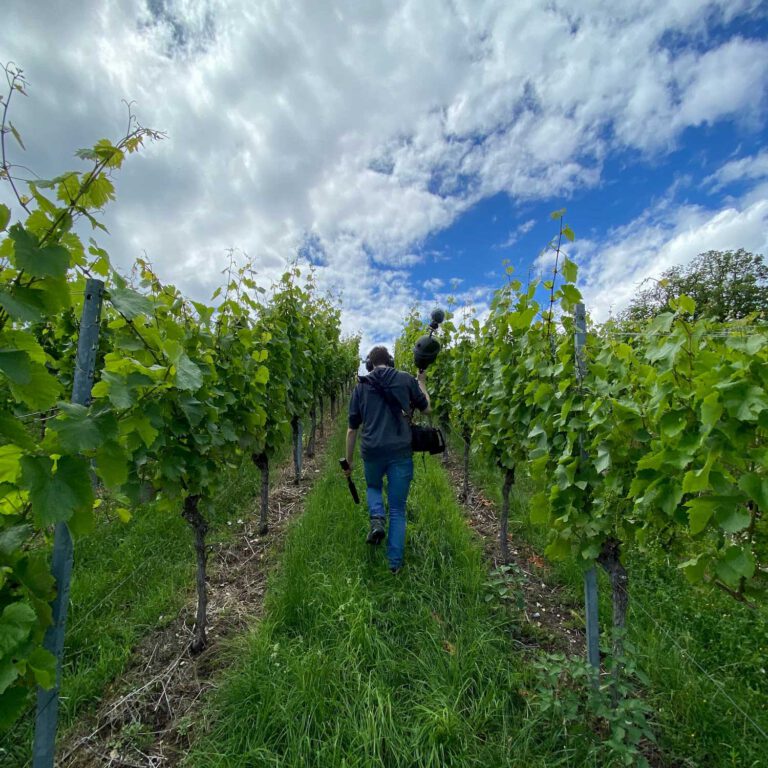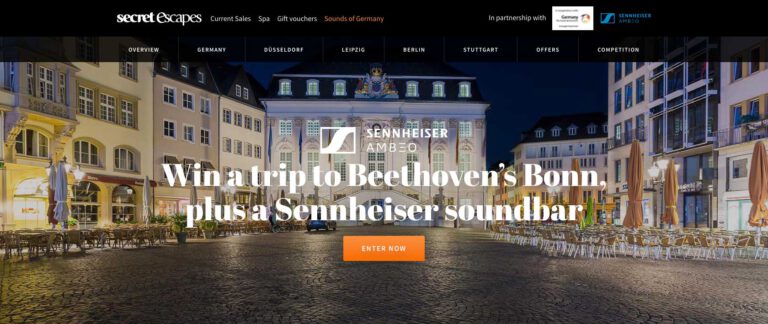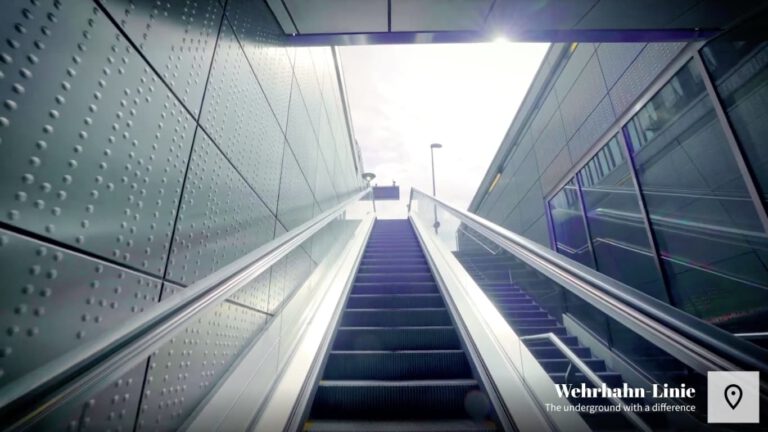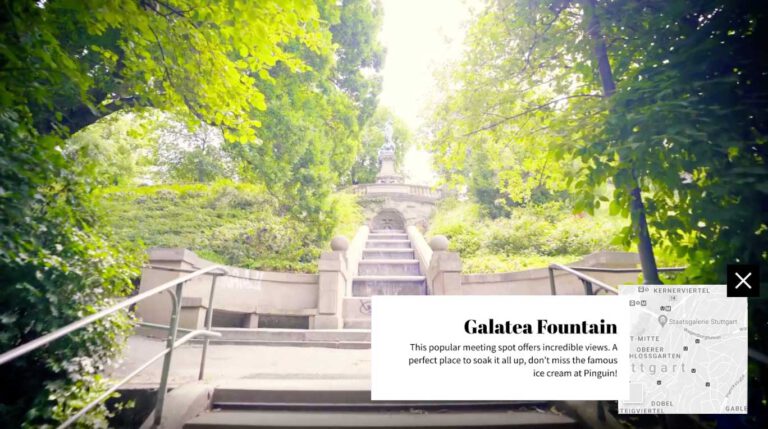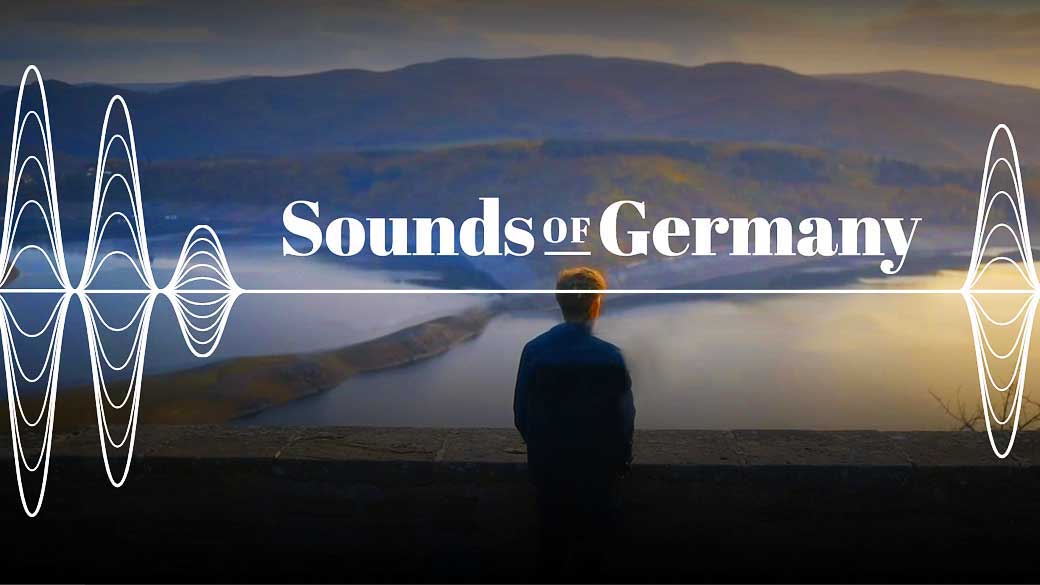
Immersive Audio Ad Creative: Sounds of Germany (3D Audio POV Commercial)
Together with the German National Tourist Board (GNTB), funded by the Federal Ministry of Economics and Energy, I developed the concept of an immersive audio ad in advance, took over the shooting on location, and then the complete post-production of the five videos. All this for the Sounds of Germany. It is exactly these projects that drive me forward: making 3D audio content available to a broad audience. To exhaust the technical possibilities and to enter new creative territory.
Later, the individual videos will be available on social media. By the way, it has nothing to do with “Sound of Germany” by musician Olli Schulz. It was just our turn earlier with the idea 😉 The same applies to Funk’s “Sounds Of” series, which can be found as “soundsof” on YouTube.
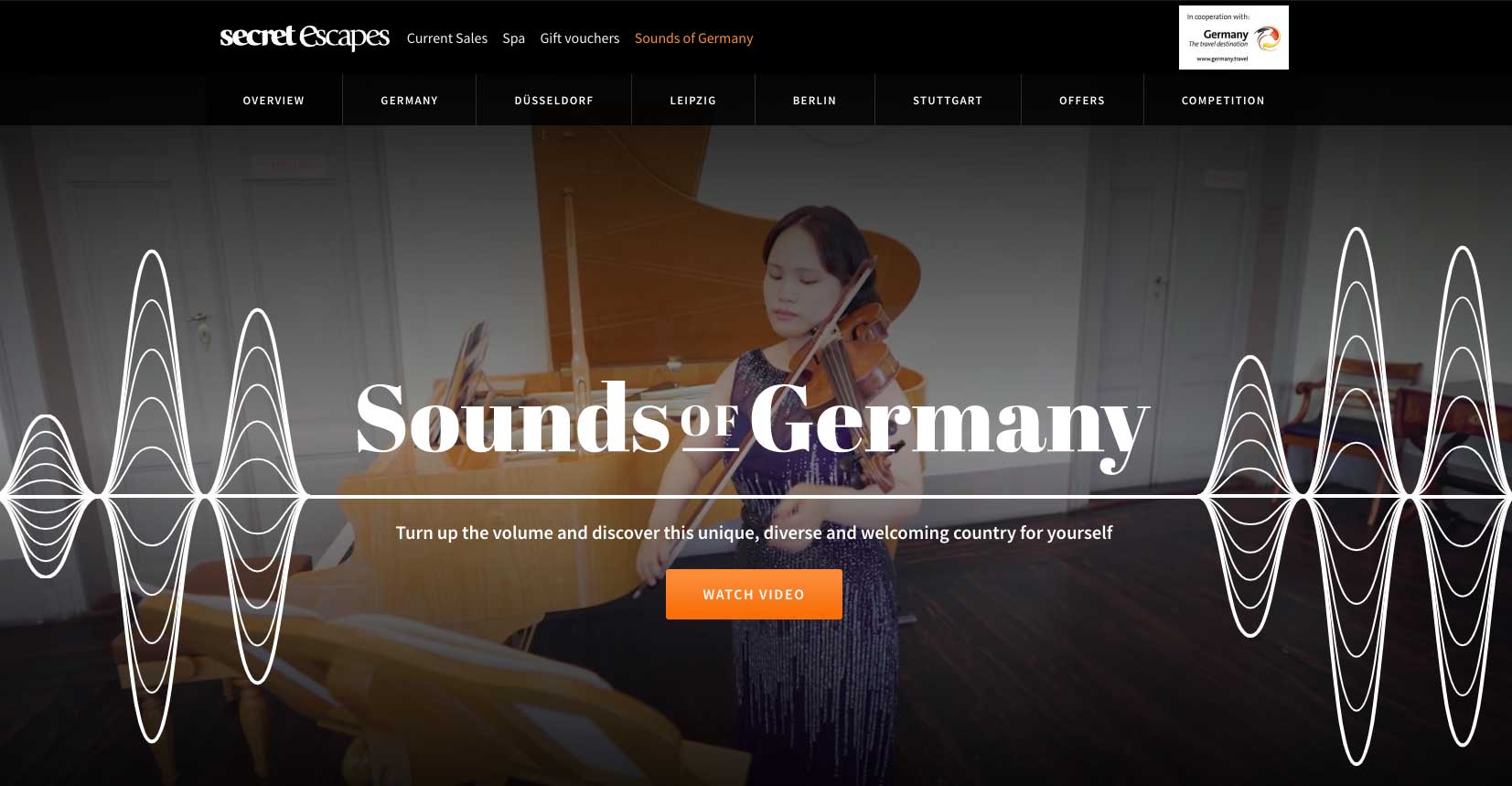
About the project
First the question in the area: How can an immersive online campaign for destination marketing with 3D audio advertising look at all? And, of course, what do the Sounds of Germany sound like? Four videos of about two minutes were planned, covering four cities and additionally a trailer for Germany as a whole. Since 2020 is the year of Beethoven’s 250th anniversary, this year the focus should be on the sound.
Click here to learn more about successful usage of Spatial Audio in marketing.
Concept and starting position
After viewing the already produced videos of the tourism industry, I came to the conclusion. The moving image looks like beautiful, but the soundtracks are not much more than stock music. This project aimed to create branded content that leverages immersive audio to enhance the viewer’s experience. Therefore the concept was born to collect sounds as an immersive tourist, which complement each other to a beat during the video. As if that wasn’t challenging enough, I wanted to reinterpret one of four Beethoven symphonies at the end. And the whole thing in 3D audio.
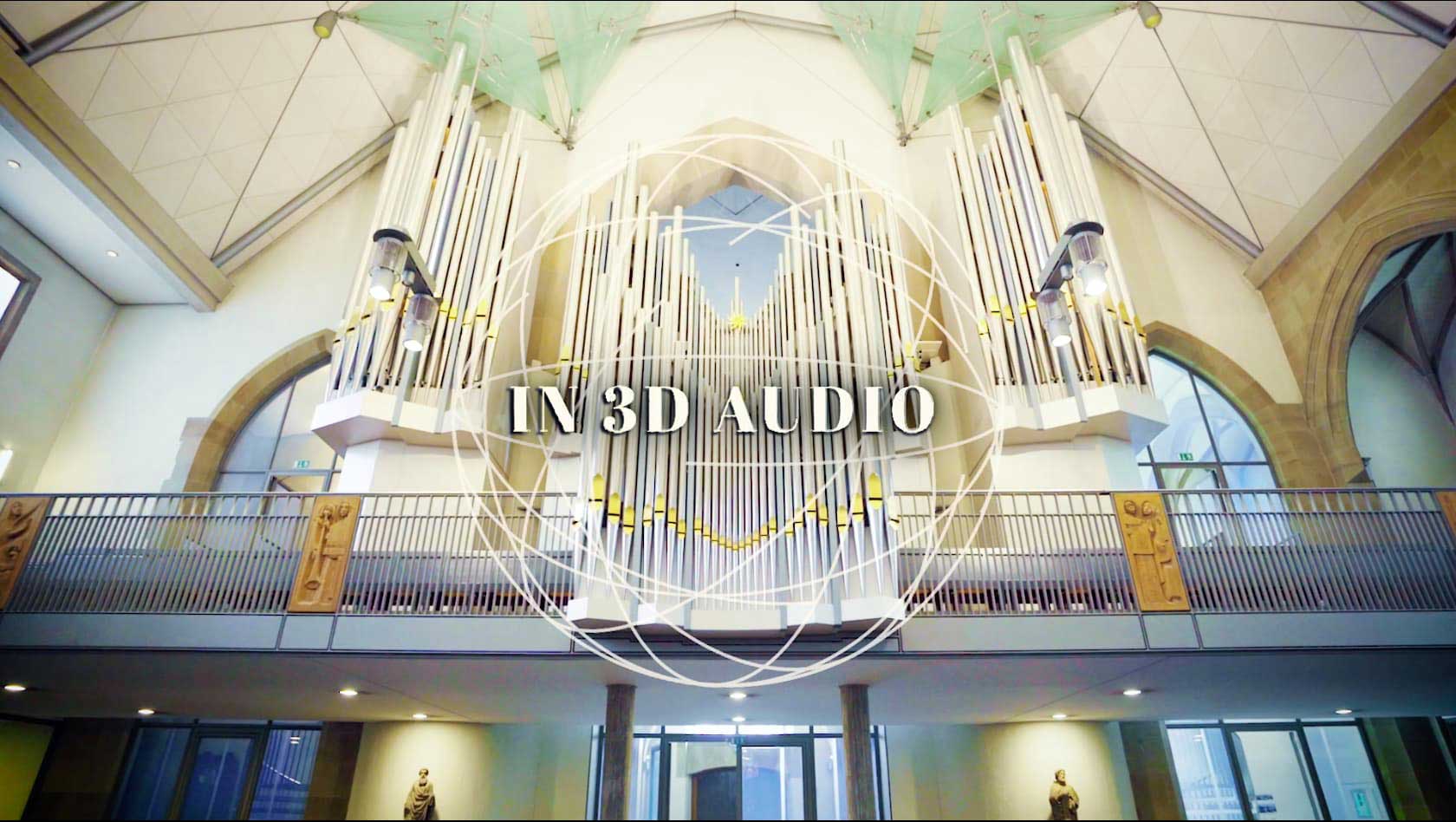
Approaching Spatial Sound
Thanks to my experience in this area, I know that 3D audio works especially well with the right moving pictures. Even if 360° video or similar formats are exciting for spatial sound, it should be as simple as possible and reach as many people as possible. Because you can assume that every household has this audio device at home: headphones. That’s how easy it can be to make immersive 3D audio accessible at home, enhancing the overall listening experience.
Requirements for the moving pictures
But this also created new demands on the video content. Therefore we decided to shoot the whole material from the ego perspective. This makes it easy for storytelling to explain why the sound is three-dimensional in the first place. In addition, exciting interactions with hands can be created, which not only produce sounds that are important for the resulting beat. Because protagonists in the true sense of the word should not be the focus, but the cities themselves. Thanks to the POV view, viewers can also feel their way better into the immersive experiences – even without VR glasses, comfortably from home.

Coordination the topics of the different videos
The four destination partners, Stuttgart, Leipzig, Düsseldorf, and Berlin must of course be treated equally. Understanding the target audience was crucial in ensuring that each city’s unique characteristics were effectively highlighted. Therefore, the clips all start similarly with putting on the headphones. The creative idea behind this is also that the sound jumps from stereo to 3D audio so that the user can directly hear the difference from conventional movie picture soundtracks. In the trailer, however, no city should be immediately recognizable, but rather typical German pictures and sounds should be heard.
The cities should also not be too similar and should stand for themselves. Drone shots, epic music, time-lapse. This has already been done enough in connection with tourism. Therefore, each partner should name about eight POIs (points of interest), which should be present in the video. It was also pleasing how the partners viewed their own sights from a nine-point of view or rather listening angles. This enabled me to apply the concept to the different cities and to work out a certain stringency among the videos with an individual touch at the same time.

Increase of the Production Value
Match cuts were a creative stylistic device to avoid jumping hard from place to place with hard cuts. Given the average attention span of less than six seconds, it was essential to use creative techniques like match cuts to maintain viewer engagement. They were perfectly suited to stay in the flow of the story and at the same time maintain the fast pace of narration necessary for online advertising. They also created a nice dynamic for the sound: Sometimes the cut was used as a break, but sometimes to put even more focus on the sound or even to use ASMR sounds. Here is a selection of established match cuts:
- taking a picture with a smartphone
- rustling the city map (ASMR)
- drinking a sip from a bottle
The POIs were used to create a creative playground to stage the locations even more playfully.
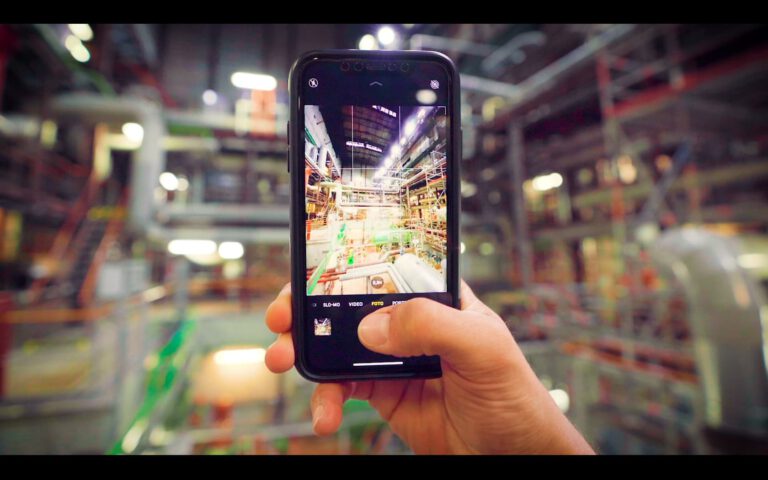
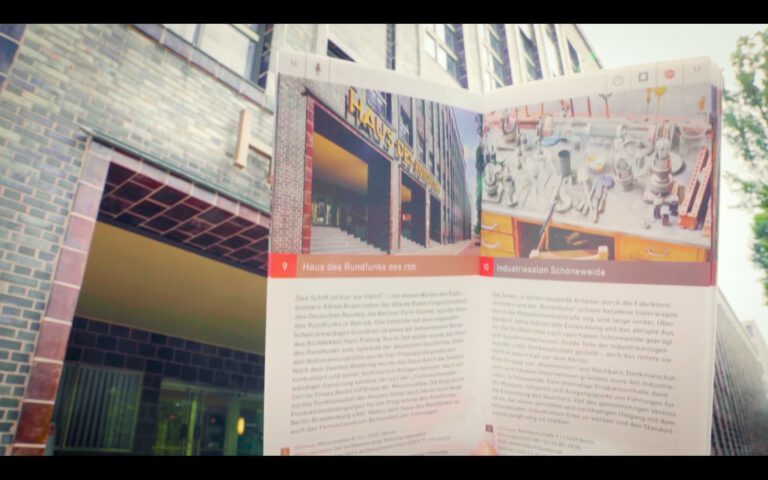
8D Audio
During the conceptual design, there was hype in Germany about 8D Audio. In my blog post I was already able to point out the topic in detail and explain the pros and cons to the people involved. The goal here was to take the enthusiasm for 8D music and apply it to the Sounds of Germany, utilizing surround sound to create a more immersive experience. In other words, I worked a lot with the rotation of the sound around the user and support this with movement in the visual material. This made the audio mixing much more unconventional because the classical approaches got in the way of the wow-effect.
Production and Post-Production
Shooting
Even though the Beethoven Jubilee was to be celebrated in 2020, the year was mainly marked by Corona. Therefore, the shooting of the four cities was postponed to July and August. So the team consisted of the cameraman Matthias Wallot and myself. This meant that we were on the road across Germany for almost a month. But the time was good, there were as few Covid-19 infected people in the months as there had been for a long time. As a two-man team, the minimum distances could be maintained at all times, making the production process feel more like real life.
© Ida Zenna, Frank Heise, Matthias Wallot
Post-Production
This was followed by over two months of editing, color correction, sound design, and mixing. The sound design aimed to create emotional connections with the audience, enhancing the overall impact of the videos. Even though I usually concentrate exclusively on 3D audio editing, it made absolute sense for Sounds of Germany to also do the image editing. According to the concept, image and sound intertwine extremely strongly.
So I have to find images that in the right order also produce the right sound. Do not forget: In the end, the result should still be Beethoven. Therefore I was able to collect the matching sounds during the editing process and create a beat that runs through the video and changes depending on the POI. I may reveal: Yes, it was not easy and in the meantime, it has brought me to my limits. But that’s exactly why I do these kinds of projects: only outside the comfort zone can growth arise.
The immersive audio campaign
Secret Escapes was chosen as a partner for the landing page. They managed to convince the GNTB with a creative concept. The campaign aimed to enhance brand engagement by creating wdm_placeholder_number_17that resonated with the audience. In addition to the video content I provided, they added so-called video overlays. This way the user could see at any time at which POI he or she was at the moment, while the video continued to run seamlessly. So you can imagine it as graphic elements, but they were not embedded in the video, but via the homepage.
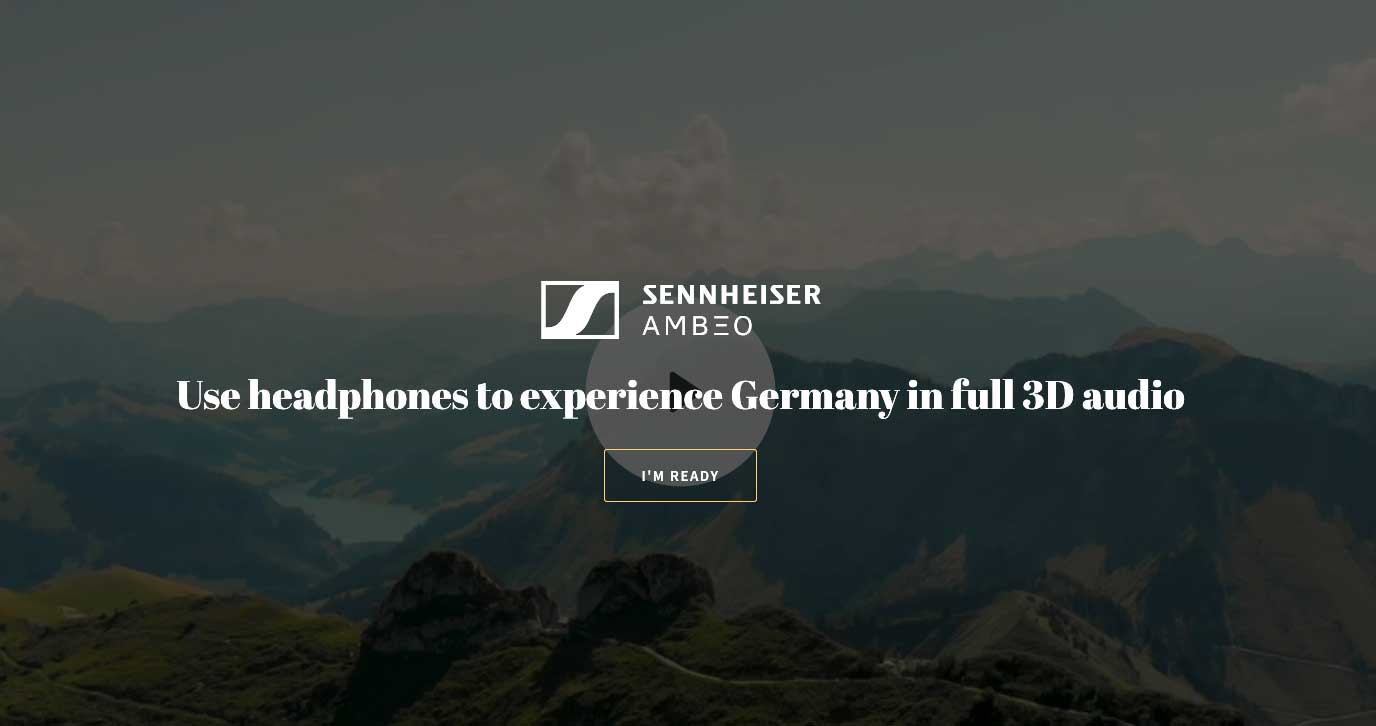
In addition, I took Sennheiser on board as an additional partner for the Sounds of Germany. Thanks to my network I knew that they would fit in very well with the project with their Ambeo program and Dear Reality. The GNTB was also pleased to have another German partner, as the past has already shown that cooperations work well in this context. For example, putting on the headphones became a product placement for Sennheiser MOMENTUM Wireless. Thanks to the use of Sennheiser’s social media channels, the reach of the campaign was further increased and I was able to create a win-win situation for everybody involved.
Fun Facts and Easter Eggs
The Sounds of Germany videos are so packed with creative elements that I want to list them here. The creative elements were designed to captivate the listener’s imagination, making the audio experience more engaging and memorable.
Stuttgart
- 0:10 The second bell of the streetcar, which is heard at the foot of the staves, was set down four half-tones to announce the first two notes of Beethoven’s 5th.
- 0:22 and 0:26 Gallateabrunne: one hears a bird from the left, which also alludes to Beethoven with “da-da-da-dum”. By the way, the ice cream is the so-called Mercedes ice cream, where the Daimler boss also likes to enjoy it. For the crunching, a number of cookies were later used in the studio, which has a certain ASMR factor
- 0:28 Mercedes-Benz Museum: all engine sounds are completely authentic. During the onboard ride in the Benz patent motor car from 1885, the chatter of the engine was incorporated into the following music as triplets to create a swing character that Beethoven was to transpose in a somewhat more relaxed but sporty manner. The sounds of the car 300 SLR with the starting number 722, as well as the Formula 1 Silver Arrow come from the archives of the museum
- 0:43 Porsche-Museum: the howling sound of the engine comes from the Porsche “sound shower”, which unfortunately did not make it into the video. But thematically – sounds make a beat – is worth a visit.
- 0:54 old castle: Even if the bell that can be seen in the video did not sound as it is suggested here, the bells to be heard are actually from the place of the event
- 1:03 Stiftskirche: here too the organ sounds in the original. Thanks again to the professional organ player who agreed to play only the first two chords from Beethoven to the player. He is in the teaser at second 11 on
- 1:15 Chapel of the sepulcher: from the sound of the tossing of the wine glasses, a “da-da-da-dum” was built, as with the bird before
- 1:25 Opera: While you are in the opera hall, you can hear the musicians warming up from outside. In fact, the first violin you hear is the one playing a string quartet by Beethoven, which the musicians presented on site. From 1:31 you can hear Beethoven’s 5th in full splendor for the first time
- 1:45 Schlossplatz: The street musician was indeed spontaneously able to play our desired song and thus offered an excellent opportunity to lighten the mood a little
Leipzig
- 0:04 Station: the beep that sounded when closing the door of the train of the German Railway changed in pitch to give the tone “E”. At 0:09 this changes by five semitones upwards to reproduce with the “A” the keynote of “Für Elise”.
- 0:14 ÖVM: also here you can hear a signal that sounds when the door is closed. The first two tones are the original from Leipzig, the following four tones have been changed in pitch to reproduce a sequence of tones from “Für Elise”.
- 0:23 Gewandhaus: The fact that there was an electric piano here was indeed random, but since Leipzig wanted to bring the theme of music to the fore, the piece by Beethoven was played here earlier than in the other videos, in order to have room for pieces by the Leipzig composers, more about this later
- 0:26 Opera: You can now hear a piano playing For Elise, but the recording actually comes from the Mendelssohn House, where a pianist was standing by for us. But since the Mendelssohn House already has so much to offer, only the sound made it into the video
- 0:30 if you listen carefully, you will notice that the sound also turns the piano as it rotates. The dancers’ performance was improvised. In the next shot, the interior of the opera, you see his painting on the wall and hear the original gong of the opera, which sounds to tell the audience that the performance is about to begin
- 0:40 Mädler Passage: now “Für Elise” sounds like the background music of shopping centers. For the inspiration used here, look up the video “Toto- Africa (playing in an empty shopping centre)”
- 0:49 While you see the Bach statue, the music changes from Beethoven to this Leipzig composer and his world-famous piece “Toccata and Fugue in D”
- 1:07 and in the Mendelssohn House one hears one of his compositions (Midsummer Night’s Dream Overture, op. 21 MWV P 3), as it can also be heard in the Effektorium. The audio-guide, as well as the steps from the creaking wooden stairs are taken from the location.
- 1:19 Plagwitz: Here you can hear a rock version of “Für Elise”, which reflects the young Leipzig and the character of the area. In the picture are actually the sound man and the colleague from Leipzig Tourism. When you stop the picture while toasting 1:26, the sound tripod with the KU100 dummy head is hidden in the blur on the left.
- 1:33 now the rock version changes into an electronic dubstep version, a remix by the artist “Klutch”, who provided his interpretation.
Düsseldorf
- 0:10 Wehrhahnlinie: from the installation one hears a long-drawn-out atmospheric sound, which can still be heard at Carlsplatz and is intended to reflect the geographical proximity.
- 0:36 K21 the elevator plunging complements the basic sounds of the Adagio of the Moonlight Sonata and has something airy about it, inspired by the walk-in steel net construction by Tomás Saraceno.
- 0:49 Kö-Bogen, Schlossplatz: to somewhat reflect the shopping character of the area, here is a slightly more affordable version of Beethoven that has something loungey about it.
- 1:00 Little Tokyo: the whole thing now in Asian-style, with taikos, gongs, and Asian string instruments. Fun Fact: Of course we also recorded the slurping of the noodles on location ourselves. But the trained ears of the cook heard that laymen are slurping and so he slurped another portion of noodles just for us, which can now be heard in the video. More authentic it does not go.
- 1:10 Rheinpromenade: to teaser the part of the band later in the video and to have music that fits the stadium atmosphere well, we now continue with a rock version, otherwise, the single piano tones of the faster part of the Moonlight Sonata (Presto agitato) would have become a bit cheesy. In combination with guitar and drums the piano works and the transition from the waltz 3/4 feeling to the 4/4 beat.
- 1:24 Band Love Machine: Here the main theme of the Moonlight Sonata is realized as a rock ballad, the drums are actually from the spot, the other instruments were – for the sake of practicability – added afterward. While the piano now takes over the basic chords of the rhythm section, the guitar plays the harmonies of the right-hand triad and the bass provides the pressure from below.
- 1:32 Füchschen: here the song changes into a version that could also sound as if it was coming from the location on the radio. In order to create even more desire for the bubbling beer, some beers were later opened and poured in the studio to create ASMR-like sounds very close to the ear
- 1:44 Asphalt Festival: The cheering of the audience is original and the fact that the audience all wear headphones fits thematically wonderfully
Berlin
- 0:20 From the radio of the Museum of Technology you can hear Waldstein for the first time in the original “Allegro con brio” tempo of about 170bpm
- 0:27 in the Haus des Rundfunks, instruments complement each other as if an orchestra were tuning
- 0:42 Radio tower: the “we welcome you” is an original from the elevator, Waldstein has now been transformed into elevator music coming from the loudspeaker that can be seen when the camera pans
- 0:52 AEG turbine plant. Now a slower version of Waldstein (about 140bpm) can be heard, which is supposed to reflect the heaviness of the machine and is supported by machine noises and electronic percussion.
- 1:04 Kulturbrauerei: Waldstein can now be heard again in the original tempo, but now the Adagio Molto in a funky jazz variant,
- 1:19 The tempo is maintained, but now goes back to Waldstein’s first bars and fits the Ewerk event space – logically with electronic sounds
- 1:35 so that you can take another ride at the end, accelerates from 140 to 170 bpm and a Drum’n’Bass version can be heard, the tone sequence is now complemented by another synthesizer
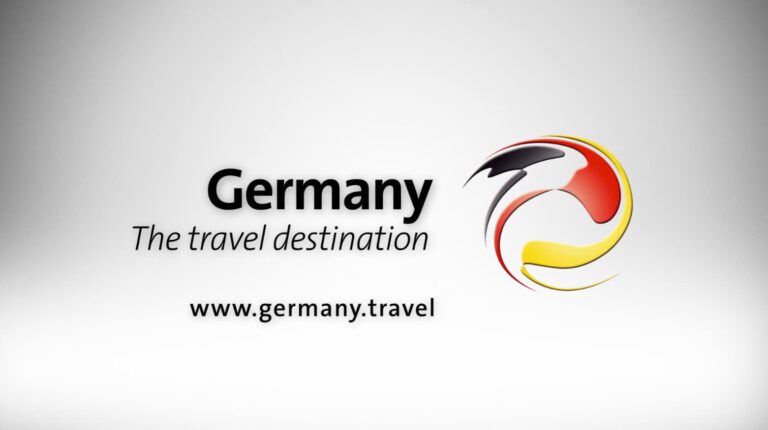
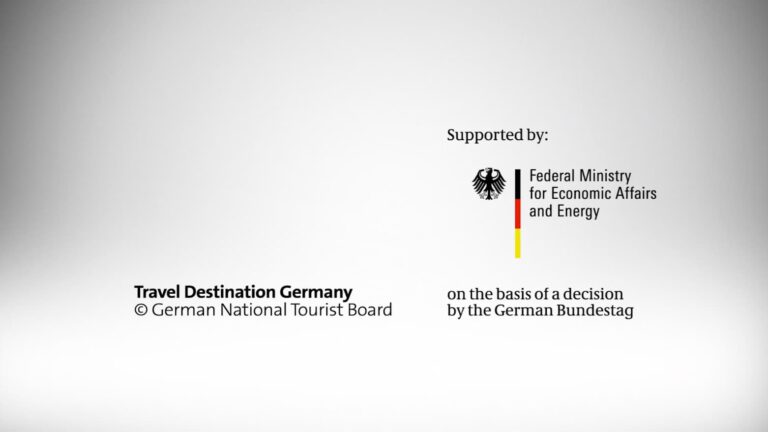
Those were the Sounds of Germany!
Here you can find even more pioneering work in 3D-Audio
